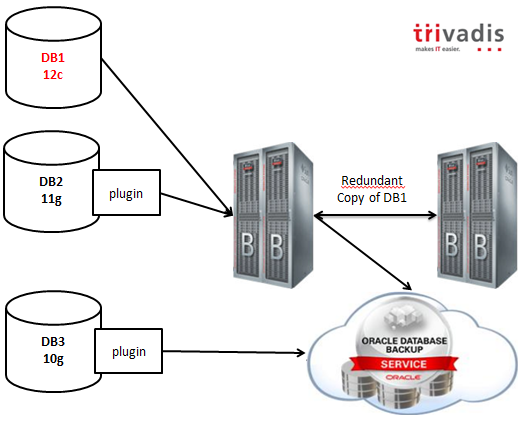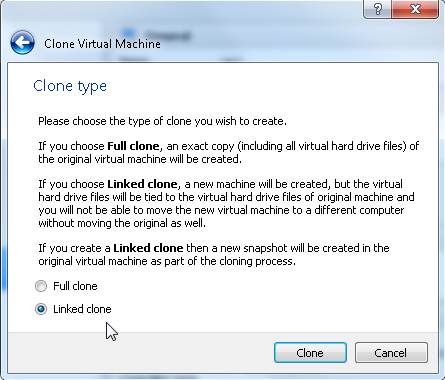[root@collabn2 grid]# ./root.sh
Performing root user operation for Oracle 12c
The following environment variables are set as:
ORACLE_OWNER= oracle
ORACLE_HOME= /u01/app/12.1.0/grid
Copying dbhome to /usr/local/bin ...
Copying oraenv to /usr/local/bin ...
Copying coraenv to /usr/local/bin ...
Entries will be added to the /etc/oratab file as needed by
Database Configuration Assistant when a database is created
Finished running generic part of root script.
Now product-specific root actions will be performed.
Relinking oracle with rac_on option
Using configuration parameter file: /u01/app/12.1.0/grid/crs/install/crsconfig_p
2014/02/18 17:34:00 CLSRSC-363: User ignored prerequisites during installation
OLR initialization - successful
2014/02/18 17:34:47 CLSRSC-330: Adding Clusterware entries to file 'oracle-ohasd
CRS-4133: Oracle High Availability Services has been stopped.
CRS-4123: Oracle High Availability Services has been started.
CRS-4133: Oracle High Availability Services has been stopped.
CRS-4123: Oracle High Availability Services has been started.
CRS-2791: Starting shutdown of Oracle High Availability Services-managed resources on 'collabn2'
CRS-2673: Attempting to stop 'ora.drivers.acfs' on 'collabn2'
CRS-2677: Stop of 'ora.drivers.acfs' on 'collabn2' succeeded
CRS-2793: Shutdown of Oracle High Availability Services-managed resources on 'collabn2' has completed
CRS-4133: Oracle High Availability Services has been stopped.
CRS-4123: Starting Oracle High Availability Services-managed resources
CRS-2672: Attempting to start 'ora.mdnsd' on 'collabn2'
CRS-2672: Attempting to start 'ora.evmd' on 'collabn2'
CRS-2676: Start of 'ora.mdnsd' on 'collabn2' succeeded
CRS-2676: Start of 'ora.evmd' on 'collabn2' succeeded
CRS-2672: Attempting to start 'ora.gpnpd' on 'collabn2'
CRS-2676: Start of 'ora.gpnpd' on 'collabn2' succeeded
CRS-2672: Attempting to start 'ora.gipcd' on 'collabn2'
CRS-2676: Start of 'ora.gipcd' on 'collabn2' succeeded
CRS-2672: Attempting to start 'ora.cssdmonitor' on 'collabn2'
CRS-2676: Start of 'ora.cssdmonitor' on 'collabn2' succeeded
CRS-2672: Attempting to start 'ora.cssd' on 'collabn2'
CRS-2672: Attempting to start 'ora.diskmon' on 'collabn2'
CRS-2676: Start of 'ora.diskmon' on 'collabn2' succeeded
CRS-2789: Cannot stop resource 'ora.diskmon' as it is not running on server 'collabn2'
CRS-2676: Start of 'ora.cssd' on 'collabn2' succeeded
CRS-2672: Attempting to start 'ora.cluster_interconnect.haip' on 'collabn2'
CRS-2672: Attempting to start 'ora.ctssd' on 'collabn2'
CRS-2676: Start of 'ora.ctssd' on 'collabn2' succeeded
CRS-2676: Start of 'ora.cluster_interconnect.haip' on 'collabn2' succeeded
CRS-2672: Attempting to start 'ora.asm' on 'collabn2'
CRS-2676: Start of 'ora.asm' on 'collabn2' succeeded
CRS-2672: Attempting to start 'ora.storage' on 'collabn2'
CRS-2676: Start of 'ora.storage' on 'collabn2' succeeded
CRS-2672: Attempting to start 'ora.crf' on 'collabn2'
CRS-2676: Start of 'ora.crf' on 'collabn2' succeeded
CRS-2672: Attempting to start 'ora.crsd' on 'collabn2'
CRS-2676: Start of 'ora.crsd' on 'collabn2' succeeded
CRS-6017: Processing resource auto-start for servers: collabn2
CRS-2672: Attempting to start 'ora.ASMNET1LSNR_ASM.lsnr' on 'collabn2'
CRS-2673: Attempting to stop 'ora.LISTENER_SCAN1.lsnr' on 'collabn1'
CRS-2672: Attempting to start 'ora.ons' on 'collabn2'
CRS-2677: Stop of 'ora.LISTENER_SCAN1.lsnr' on 'collabn1' succeeded
CRS-2673: Attempting to stop 'ora.scan1.vip' on 'collabn1'
CRS-2677: Stop of 'ora.scan1.vip' on 'collabn1' succeeded
CRS-2672: Attempting to start 'ora.scan1.vip' on 'collabn2'
CRS-2676: Start of 'ora.scan1.vip' on 'collabn2' succeeded
CRS-2672: Attempting to start 'ora.LISTENER_SCAN1.lsnr' on 'collabn2'
CRS-2676: Start of 'ora.ons' on 'collabn2' succeeded
CRS-2676: Start of 'ora.ASMNET1LSNR_ASM.lsnr' on 'collabn2' succeeded
CRS-2672: Attempting to start 'ora.asm' on 'collabn2'
CRS-2676: Start of 'ora.LISTENER_SCAN1.lsnr' on 'collabn2' succeeded
CRS-2676: Start of 'ora.asm' on 'collabn2' succeeded
CRS-2672: Attempting to start 'ora.proxy_advm' on 'collabn2'
CRS-2676: Start of 'ora.proxy_advm' on 'collabn2' succeeded
CRS-6016: Resource auto-start has completed for server collabn2
CRS-6024: Completed start of Oracle Cluster Ready Services-managed resources
CRS-4123: Oracle High Availability Services has been started.
2014/02/18 17:40:16 CLSRSC-343: Successfully started Oracle clusterware stack
clscfg: EXISTING configuration version 5 detected.
clscfg: version 5 is 12c Release 1.
Successfully accumulated necessary OCR keys.
Creating OCR keys for user 'root', privgrp 'root'..
Operation successful.
2014/02/18 17:40:38 CLSRSC-325: Configure Oracle Grid Infrastructure for a Cluster ... succeeded
 After Oracle Open World, IOUG Collaborate and all major conferences, RAC Attack comes to Geneva! Set up Oracle 12c RAC environment on your laptop. Experienced volunteers (ninjas) will help you address any related issues and guide you through the setup process.
After Oracle Open World, IOUG Collaborate and all major conferences, RAC Attack comes to Geneva! Set up Oracle 12c RAC environment on your laptop. Experienced volunteers (ninjas) will help you address any related issues and guide you through the setup process. Agenda:
Agenda:





